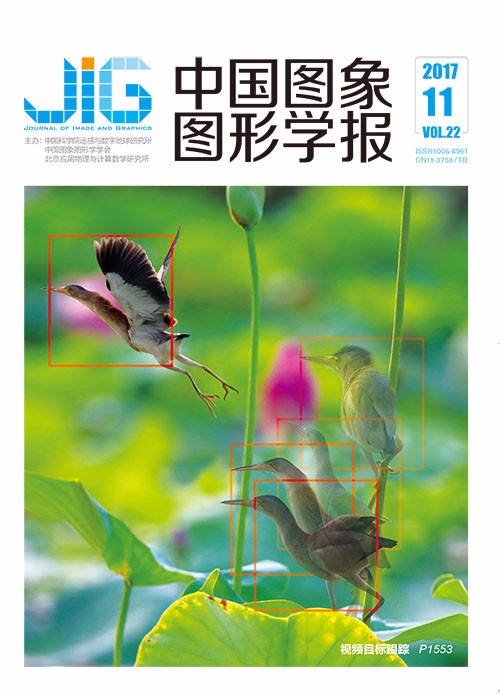
交通图像中机动车联合检测与识别
摘 要
目的 机动车检测和属性识别是智能交通系统中的基本任务,现有的方法通常将检测和识别分开进行,导致以下两个问题:一是检测算法与识别任务在时序上存在耦合问题,增加了算法设计的复杂度;二是多个任务模块及其交互会增加计算负载,降低了智能交通系统的执行效率。为了解决以上问题,结合机动车辆视觉属性与检测之间的联系,提出机动车联合检测与识别方法,将检测和属性识别任务整合在一个算法框架中完成。方法 首先,将车辆颜色与类型融合到检测算法中,使用多任务学习框架对机动车的属性识别任务与定位任务建模,在检测的同时完成属性识别。进一步地,针对智能交通系统中数据分布不均匀、呈现长尾现象的问题,将多任务学习框架与在线难例挖掘算法相结合,降低该现象给模型优化带来的危害。结果 为了验证本文提出的方法,构建了拥有12 712幅图像,包含19 398辆机动车的道路车辆图像数据集。在该数据集上,使用机动车联合检测与识别算法取得了85.6%的检测精度,优于SSD (single shot detector)与Faster-RCNN检测方法。针对识别任务,本文方法对于颜色与类型属性的识别准确率分别达到了91.3%和91.8%。结论 车辆颜色和类型作为机动车的重要视觉特征,综合利用以上线索有助于提高机动车检测的效果,同时能够得到良好的属性识别性能。除此之外,使用一个高度集成的框架完成多个任务,可以提升智能交通系统的运行效率。
关键词
Unified method for vehicle detection and attribute recognition
Guo Shaobo, Liu Xu, Wang Zilei(Department of Automation,University of Science and Technology of China,Hefei 230027,China) Abstract
Objective Vehicle detection and attribute recognition are the basic tasks in an intelligent traffic system (ITS),which aims to extract the key features of target vehicles.Most solutions separate the key features into several individual modules,such as vehicle detection,vehicle color recognition,and vehicle type recognition.However,such type of solution suffers from many problems under the practical scenario.First,the coupling problem between detection and recognition algorithms increases the complexity of algorithm designation.Second,deep learning-based algorithms are data-driven methods;thus,the algorithm designer should collect data for every single function module for training.However,data collection is costly and time consuming.Moreover,the more the ITS modules ITS,the higher the cost of the computational and communication resources.We propose a unified framework,which is integrated with the vehicle detection and attribute recognition functions,to settle these issues.Method Vehicle detection and attribute recognition tasks can be viewed as a classification problem between background and foreground regions.Color and type are two important holistic features of a vehicle.Combining the two features as the foreground region label can enlarge the diversity between foreground and background regions.The more the diversity between foreground and background regions,the lesser the false positive and true negative detection cases.We utilize the scalability of the multitask learning algorithm to finish vehicle attribute recognition and detection tasks at the same time to implement this idea.Specifically,the multitask paradigm is added on top of the region-based detection algorithm.At the training phase,instead of deploying the raw multitask learning algorithm,we integrate the online hard example mining algorithm into our framework to cope with the negative effect caused by the long-tail phenomenon.At the prediction phase,the proposed framework outputs the vehicle location,vehicle color,and vehicle type information in forward pass.Result We construct a large-scale on-road vehicle dataset,which contains 12 712 images and 19 398 vehicles,in verifying the proposed vehicle detection and attribute recognition framework.In this image dataset,every vehicle in the image is annotated with a bounding box and its corresponding type and color label.We achieve a mean average precision of 85.6%,which is better than that of the SSD and Faster-RCNN algorithms.For the recognition tasks,we achieve 91.3% and 91.8% accuracy for color and type recognition,respectively.Conclusion Type and color are two important vision cues for vehicles.Thus,integrating these attributes into the detection algorithm can boost the detection performance to another level and result in a good recognition performance.Moreover,a highly integrated system can make the ITS computationally efficient.
Keywords
vehicle detection vehicle attributes recognition hard example mining long-tail distribution multi-task learning
|



 中国图象图形学报 │ 京ICP备05080539号-4 │ 本系统由
中国图象图形学报 │ 京ICP备05080539号-4 │ 本系统由